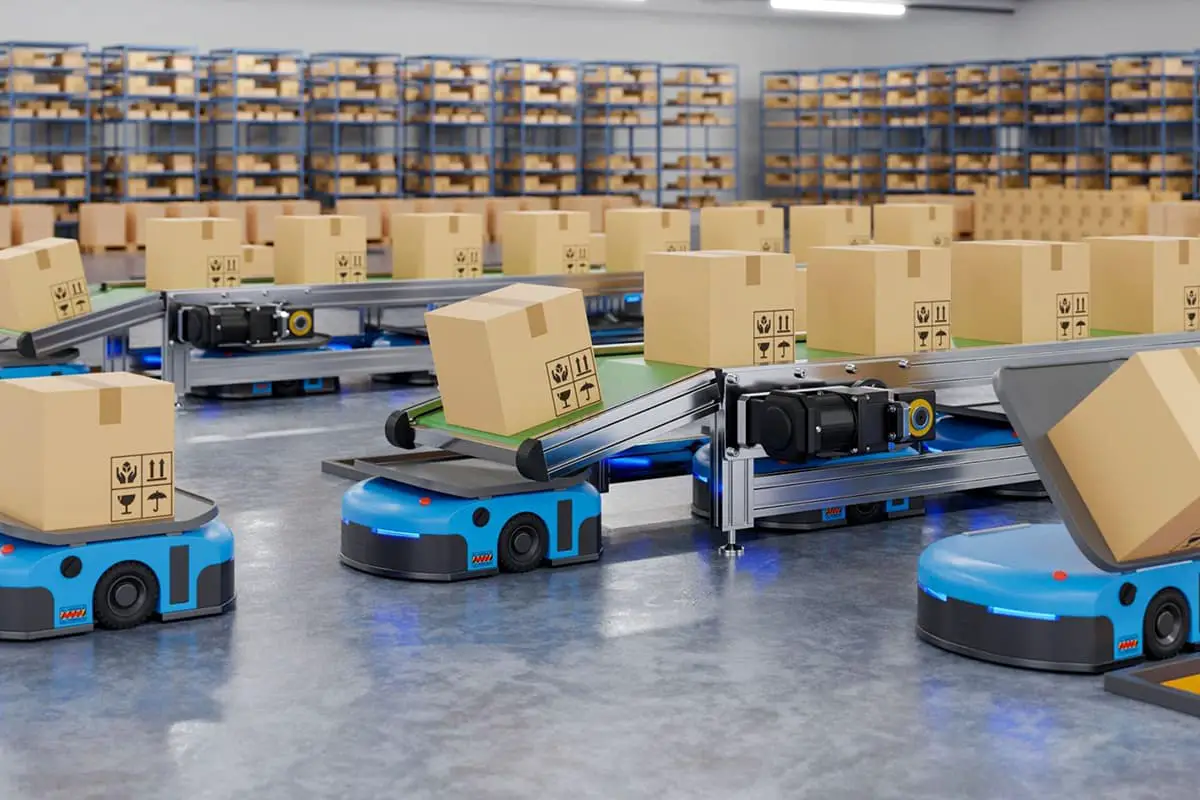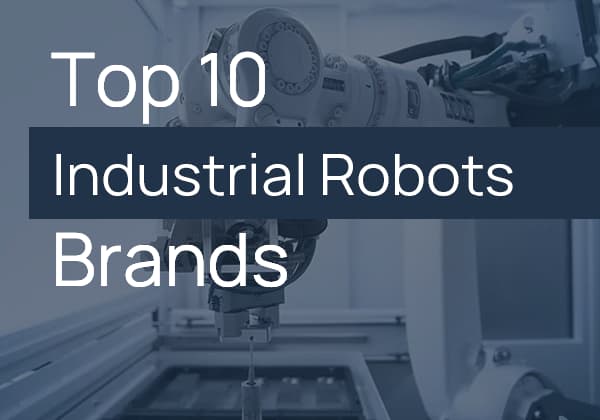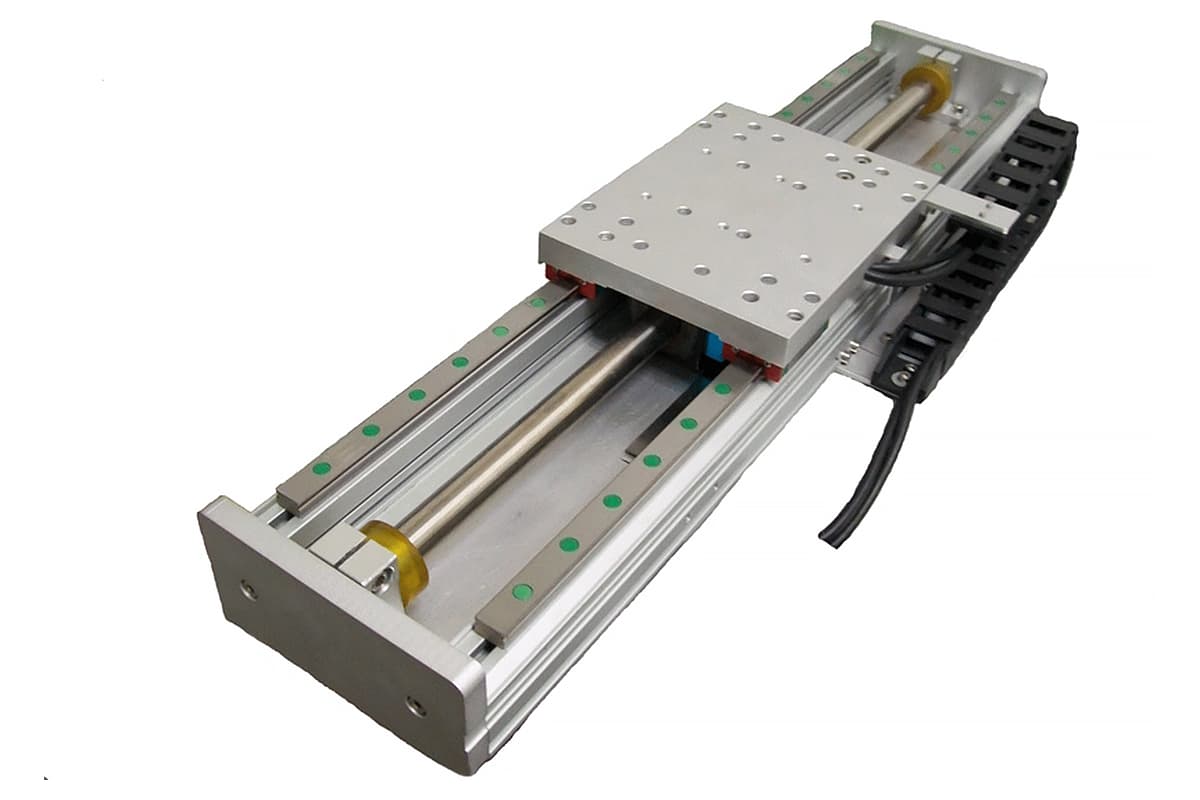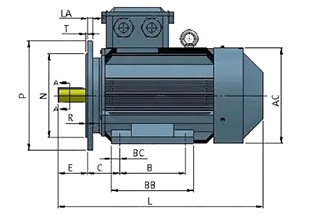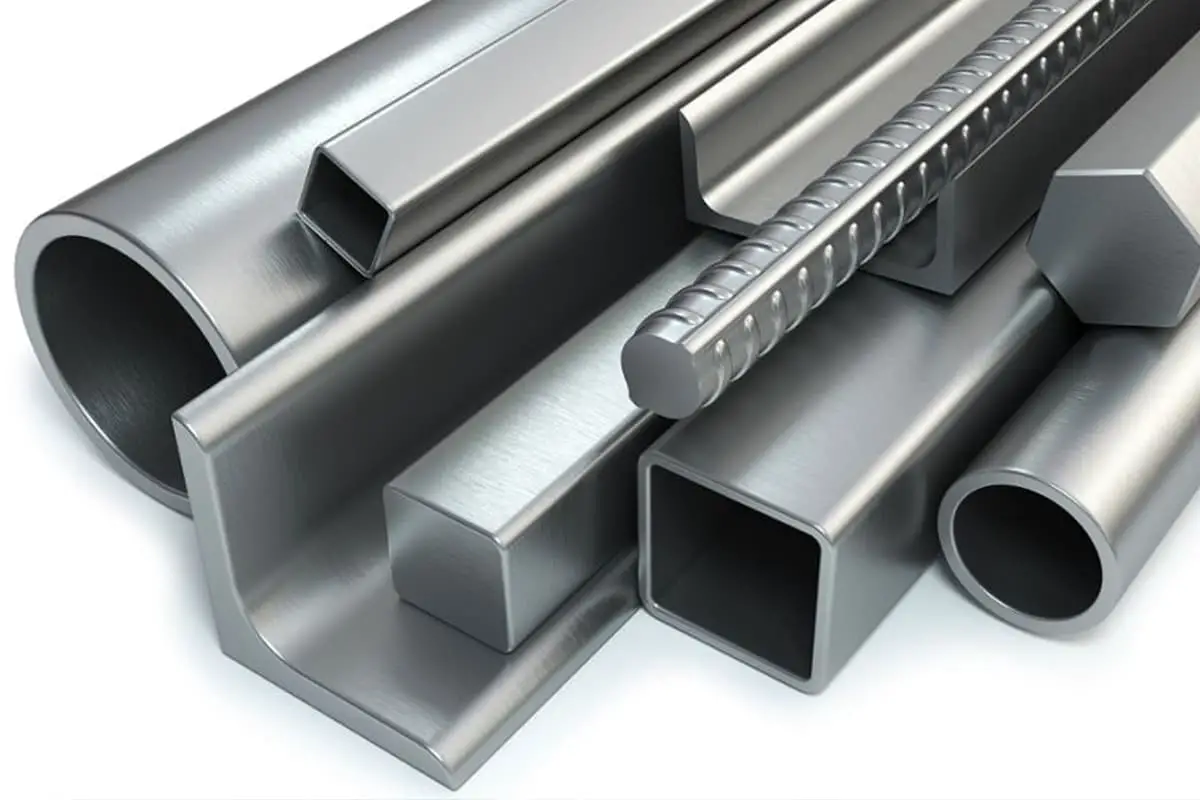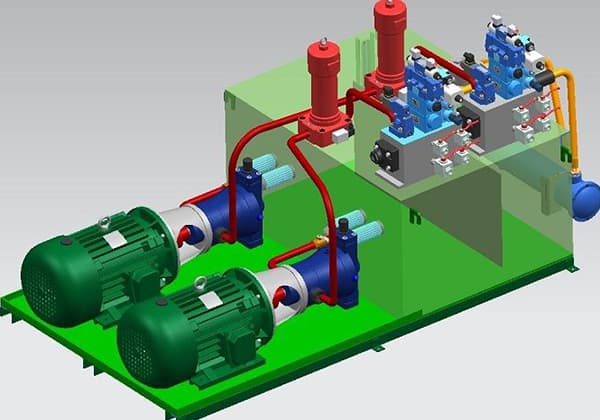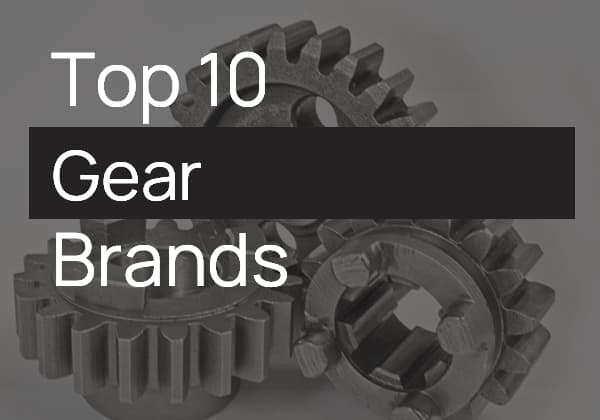
Have you ever wondered what keeps you safe and moving smoothly inside an elevator? In this article, we delve into the intricate structure and operating principles of elevators, exploring their main components and systems. From the traction machine to the safety devices, you’ll discover how elevators function seamlessly. Learn how different systems work together to ensure safety, efficiency, and comfort. Get ready to gain a deeper understanding of the technology behind one of the most essential conveniences in modern buildings.
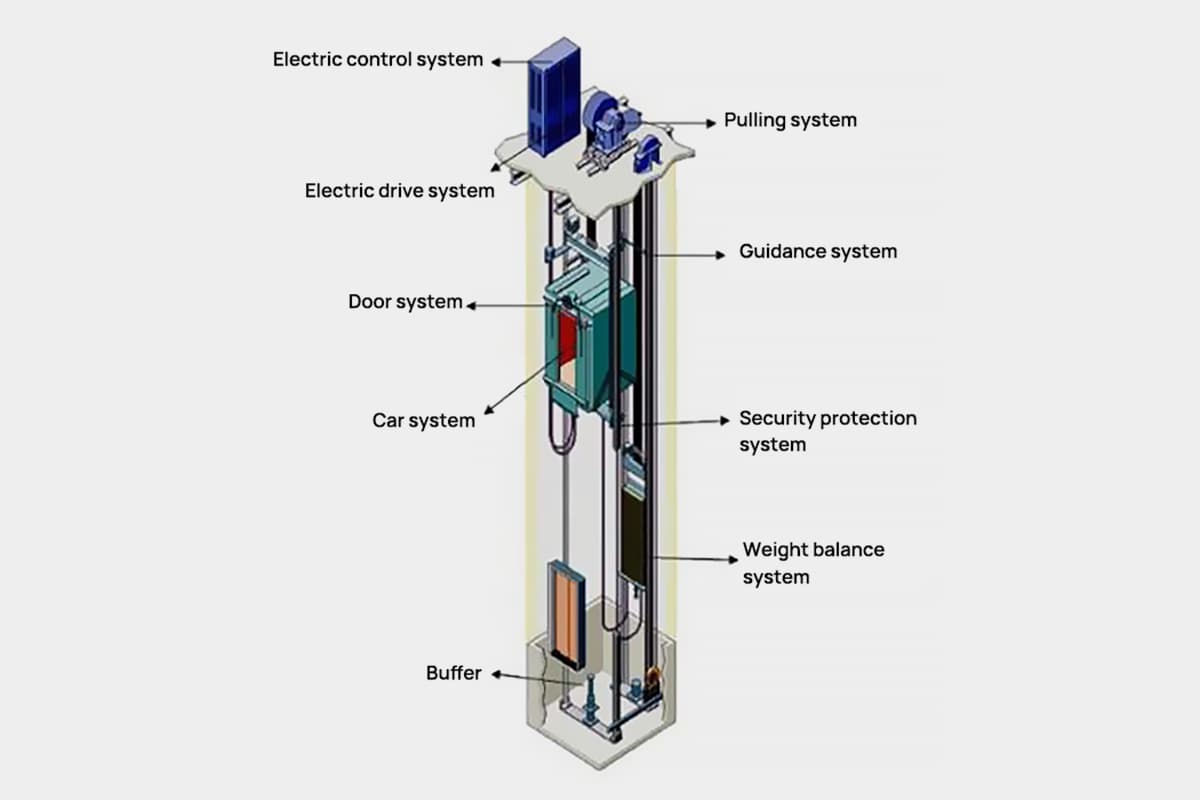
Elevators are generally divided into two categories: elevators with machine rooms and machine room-less elevators.
As the name suggests, machine room-less elevators do not have a machine room. The traction machine for this type of elevator is installed on the guide rail and load-bearing beam, while the control cabinet and other equipment are fixed on the well wall.
Elevators with machine rooms, which include small machine room elevators and regular machine room elevators, typically have the machine room located at the top, taking up more space compared to machine room-less elevators. The following will focus on the basic structure of elevators with machine rooms.
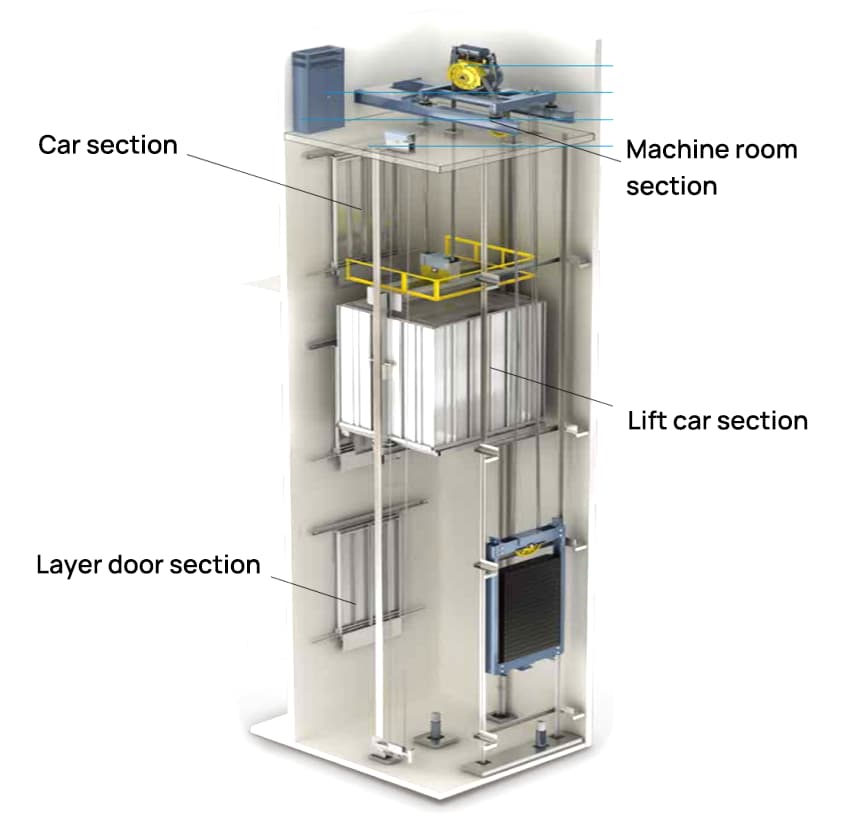
This section houses the critical drive and control components of the elevator system. It typically includes the traction machine (which provides the motive force for the elevator), the speed governor (a safety device that monitors and controls elevator speed), the main control cabinet (containing the elevator’s logic and control systems), the power distribution cabinet, and ventilation equipment to maintain optimal operating conditions.
The lift car section encompasses the passenger compartment and its associated mechanisms. This includes the car itself (designed for passenger safety and comfort), the safety gear (an emergency braking system), safety features such as the emergency communication system, the door operator mechanism, precision leveling devices for smooth floor alignment, and the car operating panel (COP) which houses the control interface for passengers.
This section comprises the components at each landing level. It includes the hall doors (which provide access to the elevator at each floor), the door header (supporting the door assembly), door frames, guide rails and associated hardware such as sliders and rollers for smooth door operation, and the door sill (the threshold between the landing and the elevator car).
The hoistway, also known as the elevator shaft, is the vertical passage through which the elevator car travels. It contains guide rails to direct the car’s movement, counterweights to balance the system, various cables and ropes (including suspension ropes, compensation ropes, and traveling cables for power and communication), buffer systems at the bottom for emergency deceleration, and often includes safety sensors and switches throughout its length.
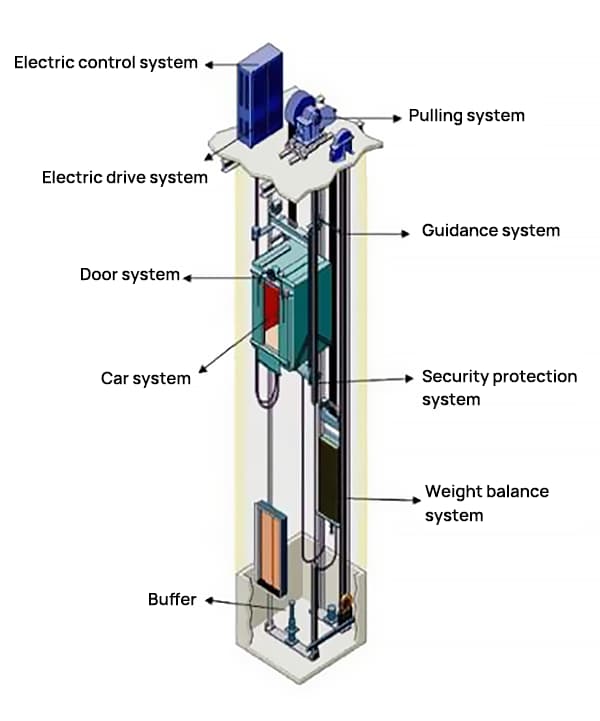
The traction system is the core power transmission mechanism of an elevator, responsible for generating and transferring the force required to move the car. It primarily comprises the traction machine (typically a geared or gearless electric motor), high-strength steel wire ropes, drive sheave, and diverter pulleys. The system’s efficiency and reliability are crucial for smooth elevator operation and energy conservation.
The guidance system ensures precise vertical movement of the car and counterweight within the hoistway. It consists of machined steel guide rails, guide shoes or rollers, and rail brackets. Modern systems often incorporate active roller guides with built-in damping mechanisms to enhance ride quality by minimizing vibrations and lateral movements, especially in high-speed elevators.
The car system is the primary passenger interface, designed for safety, comfort, and functionality. It comprises the car frame (sling), which bears the structural loads, and the car enclosure. Advanced car designs incorporate lightweight materials like aluminum alloys to reduce energy consumption, and may feature customizable interiors, intelligent lighting, and air purification systems for enhanced passenger experience.
The door system controls access to the elevator and ensures passenger safety during transit. It includes the car doors, landing doors, door operators, and interlocking devices. Modern door systems utilize microprocessor-controlled variable frequency drives for smooth, quiet operation and incorporate advanced sensors to prevent obstructions and ensure precise door positioning.
This system optimizes energy efficiency and ensures consistent traction by balancing the car’s weight. It consists of the counterweight, typically weighing 40-50% of the car’s fully loaded weight, and a compensation chain or rope for tall buildings. Advanced systems may employ active weight management to adjust counterweight mass based on car load, further improving energy efficiency.
The electric drive system powers and controls the elevator’s motion. It includes the main drive (often a permanent magnet synchronous motor for improved efficiency), power supply system, encoder for precise speed and position feedback, and a variable frequency drive for smooth acceleration and deceleration. Modern systems incorporate regenerative drives that can recover and feed energy back into the building’s electrical grid during descent or when lightly loaded.
The control system is the brain of the elevator, managing all operations and ensuring optimal performance. It comprises the main controller (often a programmable logic controller or dedicated elevator control system), positioning system, car operating panel, and landing call stations. Advanced control systems utilize artificial intelligence and machine learning algorithms for predictive maintenance, traffic optimization, and energy management.
The safety system is a critical component ensuring passenger protection and regulatory compliance. It includes the overspeed governor, safety gear, buffers, and emergency brakes. Modern safety systems incorporate electronic monitoring of all critical components, uninterruptible power supplies for emergency operation, and advanced communication systems for remote monitoring and rapid response to potential issues. Additionally, seismic sensors and operation modes are integrated in earthquake-prone regions to enhance passenger safety during seismic events.
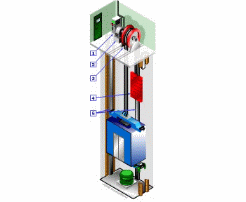
An elevator system consists of a car and a counterweight, interconnected by high-strength steel wire ropes. The traction drive, powered by a precision-engineered traction machine, facilitates the vertical movement of both the elevator car and counterweight along dedicated guide rails within the elevator shaft.
Guide shoes, strategically mounted on the car frame, interface with the fixed guide rails anchored to the building’s hoistway walls. This configuration ensures smooth vertical travel while preventing lateral deviation or oscillation during operation, enhancing ride quality and passenger safety.
The elevator’s braking system employs a normally closed, spring-applied/electrically released block-type brake. During normal operation, the brake remains disengaged, allowing free movement. In the event of power loss or emergency stop signals, the brake engages instantaneously, arresting car motion and securely holding it at the nearest landing, facilitating safe passenger ingress and egress.
The car, a structurally reinforced enclosure, serves as the primary load-bearing component for passengers or freight. The counterweight, typically weighing approximately 40-50% of the car’s rated capacity plus the car weight, optimizes energy efficiency by reducing the effective load on the drive system. A compensation chain or rope system dynamically adjusts for changes in rope weight as the car travels, ensuring consistent traction and precise floor leveling across the entire travel range.
The elevator’s electrical control system orchestrates all aspects of operation, including floor selection, automatic leveling, speed regulation, and cabin illumination. An integrated position indicator system provides real-time updates on car direction and floor location. Multiple redundant safety devices, including overspeed governors, buffer systems, and emergency brakes, work in concert to ensure fail-safe operation under all conditions.



